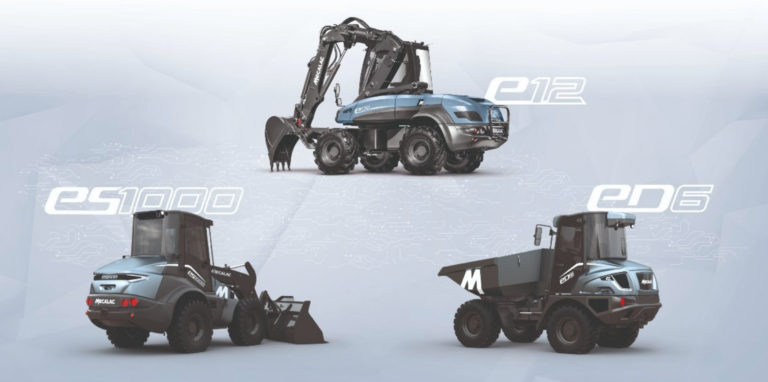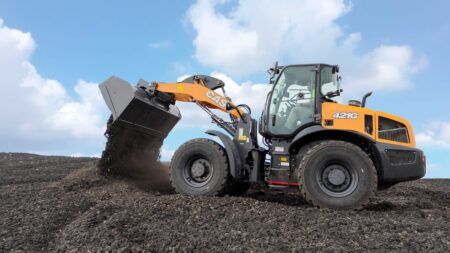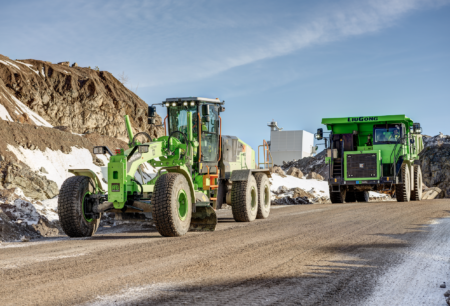The unveiling of Mecalac’s brand new electric dumper and swing loader at this year’s Bauma will complete the company’s trio of medium-sized urban electric machines. Its 11-ton e12 excavator, which was debuted back in 2018, are joined by the 1000-litre es1000 swing loader and the ed6, its new six-tonne dumper. This trio of urban warriors are complimented by on-site high power battery charging solution M-Power to aid intelligent, clean and silent construction sites.
The current market offer of mini electric machines cannot carry out urban construction jobs on their own. Mecalac’s challenge was therefore to be the first manufacturer to develop a full range of medium-sized products.
The main reason explaining the absence of medium-sized electric machines on the market is the optimisation power management to ensure sufficient autonomy. To overcome this challenge, Mecalac has made a technological breakthrough on the hydraulic distribution system, as well as on the energy management of auxiliary systems (eg: heating and air conditioning) to drastically reduce energy consumption without compromising autonomy and performance.
The way of driving that operators have adopted for decades behind the steering wheels of combustion engine machines is not always compatible with optimising battery performance. For example, when the throttle pedal is pressed, all the power of an electric machine is instantaneous, unlike combustion engine machines. Mecalac has therefore configured the human machine interface so that it reacts in an optimal way to preserve autonomy and guarantee a coherent behaviour.
M-Power is a mobile high power supply solution. With its 300kWh storage capacity, it replaces “traditional” diesel generators by providing a battery charging solution anywhere. Mecalac’s electric ecosystem is a game-changer that enables a drastic reduction in CO2 emissions on construction sites. For example, three Mecalac zero-emission machines working together on the same urban worksite save an average of 64 tons of CO2 that their combustion engine equivalents would have emitted over a year





